Common mistakes with pigs
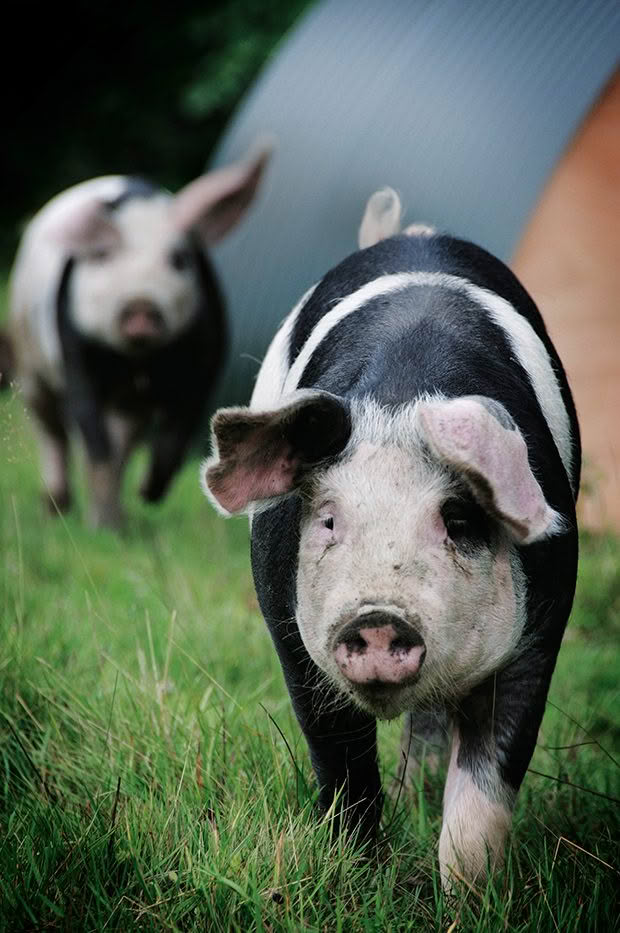
All you need to know about what can, and does, go wrong with pigs.
Words: Dr Sarah Clews, BVSc
The common kunekune wasn’t always so common. In fact, in the 1970s, there were less than 50 individuals. Since then it has made a comeback as a beloved lifestyle block pet. But kunekunes, like other pig breeds, are not simple animals; they require a considerable amount of care and attention.
This month, we’re continuing our Common Mistakes series with pigs, breaking down the most frequent ways block owners and smallhold breeders may accidentally go wrong.
NO FACILITIES
Pigs are difficult to examine, even for a vet. Their jugular vein lies deep under their floppy jowls making blood sampling difficult. Their heart and lungs lie under such thick layers of fat that examining them with a stethoscope is difficult to impossible. Thick fat packed around the rectum can render a thermometer useless. But the biggest challenge is getting your hands on the animal in the first place.
While sheep and cattle yards are commonplace on farms and blocks, a pig-sized crush for restraint is almost unheard of. On commercial farms, a sow may be placed in a crate, making medical procedures simple while keeping the handler safe. But on a lifestyle block with little infrastructure, we vets often have to put ourselves in awkward positions to examine pigs.
If your pig does require a blood draw or medical intervention, sometimes sedation is required. In an already sick pig, this poses a very real risk and it’s not unheard of to lose a pig as a result of sedation simply because you had no other choice.
If you have a friendly pig and a vet with a special interest, you may have the option of snaring their nose, but this is not a given.
A solution for pig owners is to build a small race and frequently feed your pig in there to acclimatise it. This will make examining, treating and even foot trimming easy. The race should have a gate at the front and back to close them in, be narrow enough to prevent them from turning around, and have slats on the side with wide enough gaps to allow the vet to access their body and feet easily.
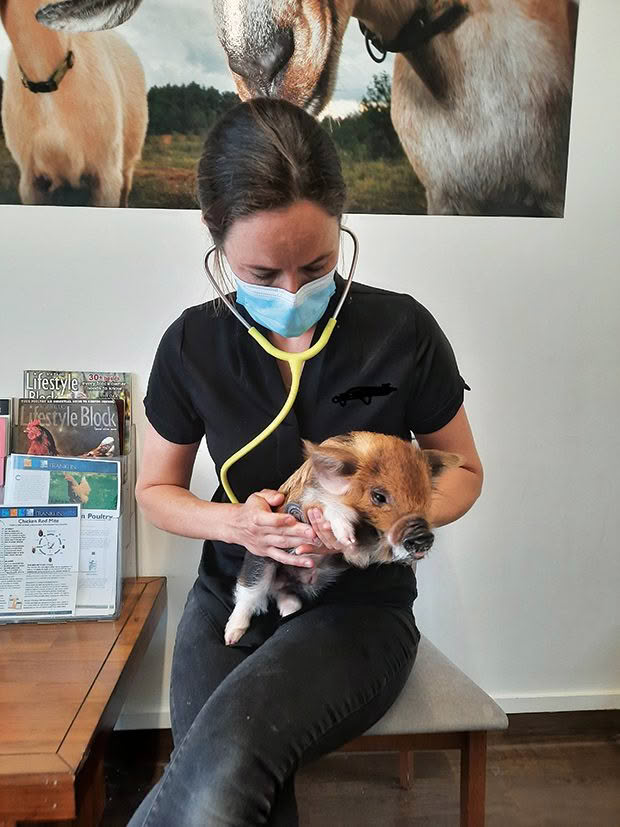
Sarah examining a piglet for aspiration pneumonia.
NOSE RINGING WITH UNREALISTIC EXPECTATIONS
Nose ringing is common on blocks, but it’s often carried out with unrealistic expectations, frustrating owners and causing unnecessary suffering to the animal. Nose ringing is done to cause pigs discomfort and discourage them from rooting up pasture with their noses. But the nose is a very sensitive organ and ringing is a painful procedure that inhibits a pig’s natural instinct to investigate their environment. Besides, ringing will not always work. Rings will fall out or grow out and at some point they will likely need redoing. Owners often need to place more and more rings to achieve a satisfactory result, and many eventually give up.
The welfare code lists ringing as a painful procedure and states that owners should investigate other management tools first.
• Try laying hay and peat (organic decomposing material) in a dedicated area of the paddock. Pigs prefer to root this up, rather than pasture.
• Scatter their scraps in with this new rooting material, and dig their pellets under the top soil in the morning to keep them occupied in one area.
• Put them to work turning over the garden or soil in a paddock before resowing.
• Confine them to an area of woodland, which is where many pig breeds evolved. Pigs may be kept in with a single, low, electric wire.
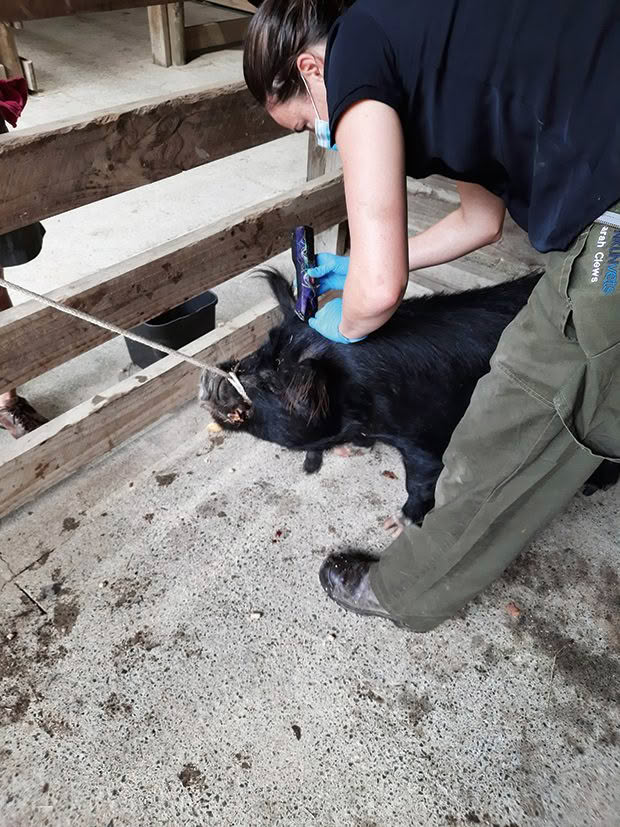
A pig with a nose snare.
If none of this works for you, consider that pigs may not be the best option for your block. If you do choose to ring, expect the animal to be in pain at least initially. Never nose-ring a kunekune’s septum – this inhibits its ability to breathe. Monitor closely for persistent infections in which case the ring may need to be removed.
NUTRITION AROUND BREEDING
Since they were first domesticated, pigs have earned themselves a reputation as backyard waste disposal systems, eating anything and everything. But at the same time, we have selected our meat breeds to be very fast-growing, produce a high milk supply and birth a large number of piglets. These large, fast-growing meat breeds can clock in at over 300kg as adults, giving birth to more than 20 piglets in a litter – their ancestors would have had three to five.
A young pig can gain 75kg in six months – a feat that would take humans two decades to achieve. As such, you cannot get away with breeding these animals without including appropriate nutrition. And yet, we see people try to get away with it all the time.

Pregnant sows should be fed a properly formulated pellet diet in late pregnancy to give her body what it needs to grow all those tiny bodies, without causing her to put on weight. An overweight sow at farrowing poses a high risk to her piglets. Once she’s given birth, her body will be leaching high amounts of calcium from her bones, along with other essential nutrients, to feed her piglets. She will therefore need access to a nutrient-dense pellet formulated for lactation. Her growing piglets should be offered a “creep feed” from birth and a “grower” pellet from a week or two before weaning, right up to five to six months old. If you’re going to feed kitchen scraps to your growing pigs, use high-protein, low-fibre material, and feed a vitamin and mineral “premix” to make sure they’re at least getting the minerals they need.
Neglecting the dietary requirements of these high-production animals not only results in poor growth, but can cause fragile bones, deformed skeletons and broken backs, as well as paralysed and irreversibly damaged sows.
THE OBESE KUNE
Kunekunes are a far cry from the fast-growing, lean meat breeds. Kunekune means “fat and round” in Te Reo, and they really do fit the cliche. Kune piglets grow slowly, they wean much later at two to three months old, and very quickly switch to “lay down fat” mode. Kunes are frequently improperly fed, which results in obesity and all the weight-related diseases that go along with it.
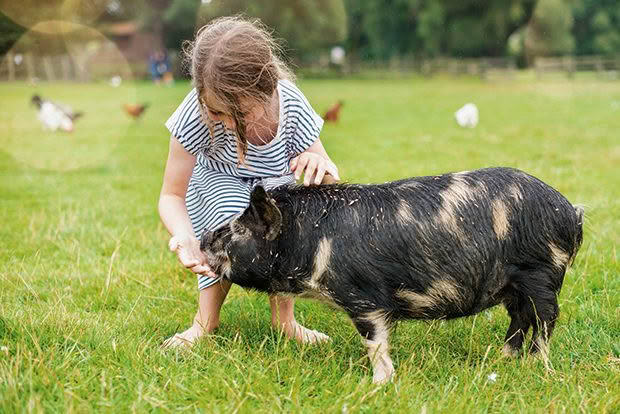
Follow these golden rules for success:
• Growing kunekune piglets should only be fed a grower diet or premix for the first 14-16 weeks of life, before moving to a high-fibre, low-protein diet.
• Allow kunes to graze as much as possible. Kunes obtain more nutrition from grass than other breeds, but more importantly, the high fibre helps to fill them up.
• Avoid refined carbs such as white bread, rice and sugary junk.
• Offer a low to moderate level of protein from a variety of sources or feed a kunekune pellets once a day.
Once you have an obese adult, getting weight off is difficult. Graze on a hillside to encourage exercise, and offer entertainment such as toys and rooting material to reduce their time eating.
FEEDING MEAT TO PIGS
Meat, meat products and any food that has been in contact with meat, must not be fed to pigs without boiling for an hour. This applies to raw and cooked meat, even processed “junk” meat. This is a requirement under the Biosecurity (Meat and Food Waste for Pigs) Regulations 2005 and exists to prevent the establishment of Foot and Mouth Disease in New Zealand.
This law is unknown by so many lifestylers that it is often said in the farming community that should Foot and Mouth Disease crop up in the country, it will probably come through a lifestyle block. Don’t let yourself be that unfortunate person.
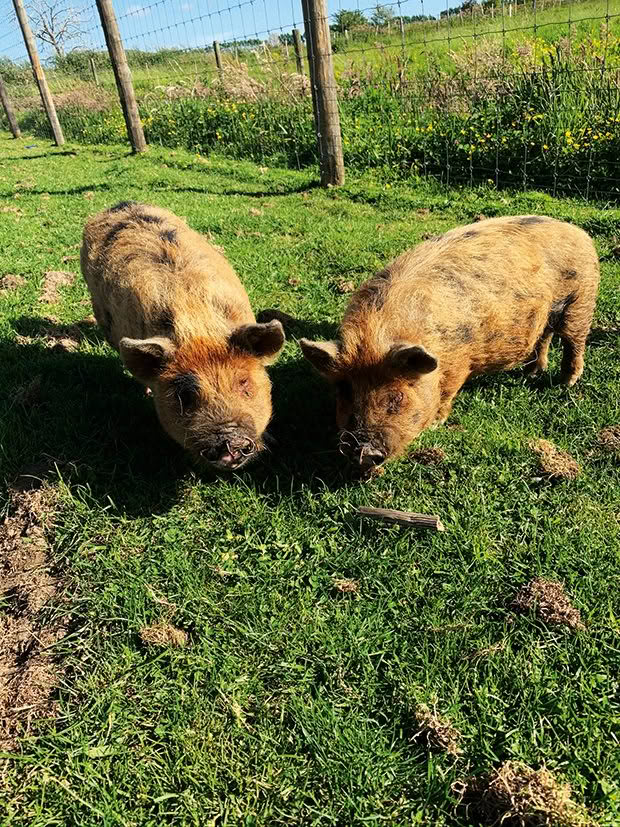
Pigs will naturally explore with their noses.
USING THE WRONG DRENCH
The key gut worms that we worry about in our backyard pigs include:
• Red stomach worm, which causes stomach ulcers and blood in the stool.
• Liver worm, which causes liver damage, coughing and sudden death.
• Whipworm, which causes diarrhoea and weight loss.
While ivermectin and doramectin are by far the most commonly sold drenches for pigs in New Zealand, they don’t actually kill whipworm effectively. If you are drenching young pigs under six months old or a pig with diarrhoea and weight loss at any age, you’ll need to use a drench called flubendazole. This goes in the food and will be sure to kill whipworms. However, the benefit of ivermectin or doramectin is that they also kill mange-causing mites, so are a great choice for sows before farrowing to prevent mange being passed to the newborn piglets.
Love this story? Subscribe now!
 This article first appeared in NZ Lifestyle Block Magazine.
This article first appeared in NZ Lifestyle Block Magazine.
